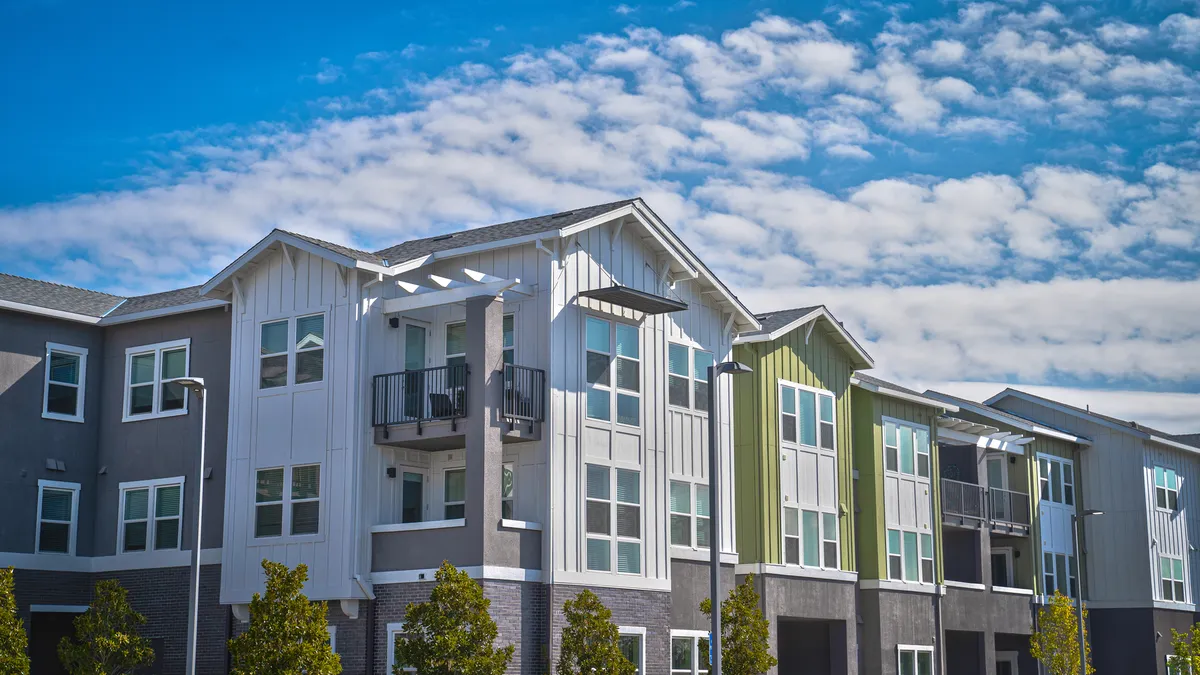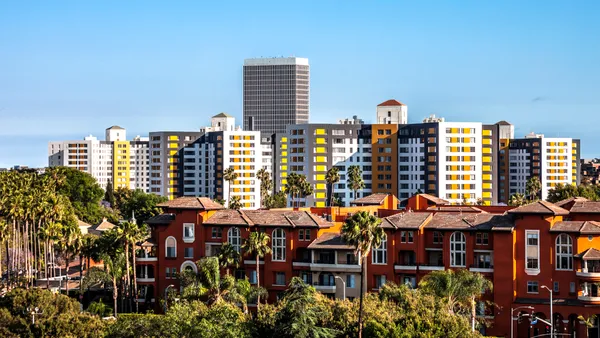Dive Brief:
- The national average rent saw its largest gain in 20 months in March, up $8 to $1,721. The gain signals a return to regular seasonal patterns of rent growth, which were upended at the start of the COVID-19 pandemic in the spring of 2020, according to Yardi Matrix’s latest National Multifamily Report.
- Year-over-year rent growth rose significantly in March, up 30 basis points to 0.9%. The month-over-month and quarterly rent growth of 0.5% is in line with the 0.6% average growth over the same period in the five years preceding 2020, according to Yardi.
- March’s rebound follows several consecutive months of decline in the national average rent during the fall and winter, as well as concerns about a slowing economy and a high supply and delivery pipeline. Tailwinds include strong job growth and household formation buoyed by immigration.
Dive Insight:
The nation’s largest metros are also seeing a return to positive rent growth. Only four out of the top 30 markets remain in the red this month, compared to 13 over the past year. Austin, Texas, is the only market below -5.0% rent growth YOY, which Yardi attributes to a large number of new deliveries.
Midwest markets are some of the top performers for YOY rent growth, with Columbus, Ohio; Indianapolis and Kansas City, Missouri, coming in behind New York City for the top four. Rents are even rising in markets facing high supply growth, including Orlando, Florida, where rents are up 1.4% YOY despite a 4% increase in apartment stock over the last 12 months.
| Market | YOY rent growth, March 2024 | YOY rent growth, February 2024 | Difference |
|---|---|---|---|
| New York City | 5.0% | 5.4% | -0.4 |
| Columbus, Ohio | 4.5% | 3.6% | 0.9 |
| Kansas City, Missouri | 3.7% | 3.3% | 0.4 |
| Indianapolis | 3.5% | 3.0% | 0.5 |
| New Jersey | 3.4% | 3.8% | -0.4 |
| Chicago | 3.1% | 3.1% | 0 |
| Washington, D.C. | 2.8% | 2.8% | 0 |
| Boston | 2.6% | 2.8% | -0.2 |
| Philadelphia | 2.2% | 2.0% | 0.2 |
| Twin Cities | 2.0% | 2.1% | -0.1 |
SOURCE: Yardi Matrix
Columbus also had the steepest short-term rent growth at 1.3% from February to March, followed by Orlando and Seattle at 1.1%. The only two markets with short-term rent declines were Nashville, Tennessee, at -0.3% and Baltimore at -0.1%.
The state of the market
With interest rates up over 500 basis points since 2022, steeper mortgage rates have made it difficult for owners to refinance low-coupon multifamily loans, according to Yardi. Out of the 58,000 loans in Yardi Matrix’s database, totaling $1.1 trillion, $150 billion in multifamily debt is scheduled to mature by 2025 and $525 billion by the end of 2029.
Although some forecasts have projected a wave of defaults or even bank failures, distress has so far been slow to arrive, as lenders have negotiated extensions with borrowers and delinquencies are low. Loans with Fannie Mae and Freddie Mac are at a 30-day delinquency rate of less than 0.50%, while commercial bank loans are at about 1% and commercial mortgage-backed securities stand at 1.8%.
Mortgage rates have fallen between 75 to 100 basis points since the fall, and loan coupons now start below 6%. However, few borrowers want to lock in rates at this level, as they expect rates to go down within the next few years, according to Yardi.
“The [government-sponsored entities] have traditionally focused on long-term loans, but now borrowers are demanding fixed-rate loans with five-year terms that give them prepayment flexibility,” the report reads. “CMBS, a bit player in multifamily lending for years, is gaining traction with a product that allows borrowers to reduce the coupon rate by paying a percentage of the balance as a fee. While multifamily distress no doubt will tick up, the trendline overall is positive.”











